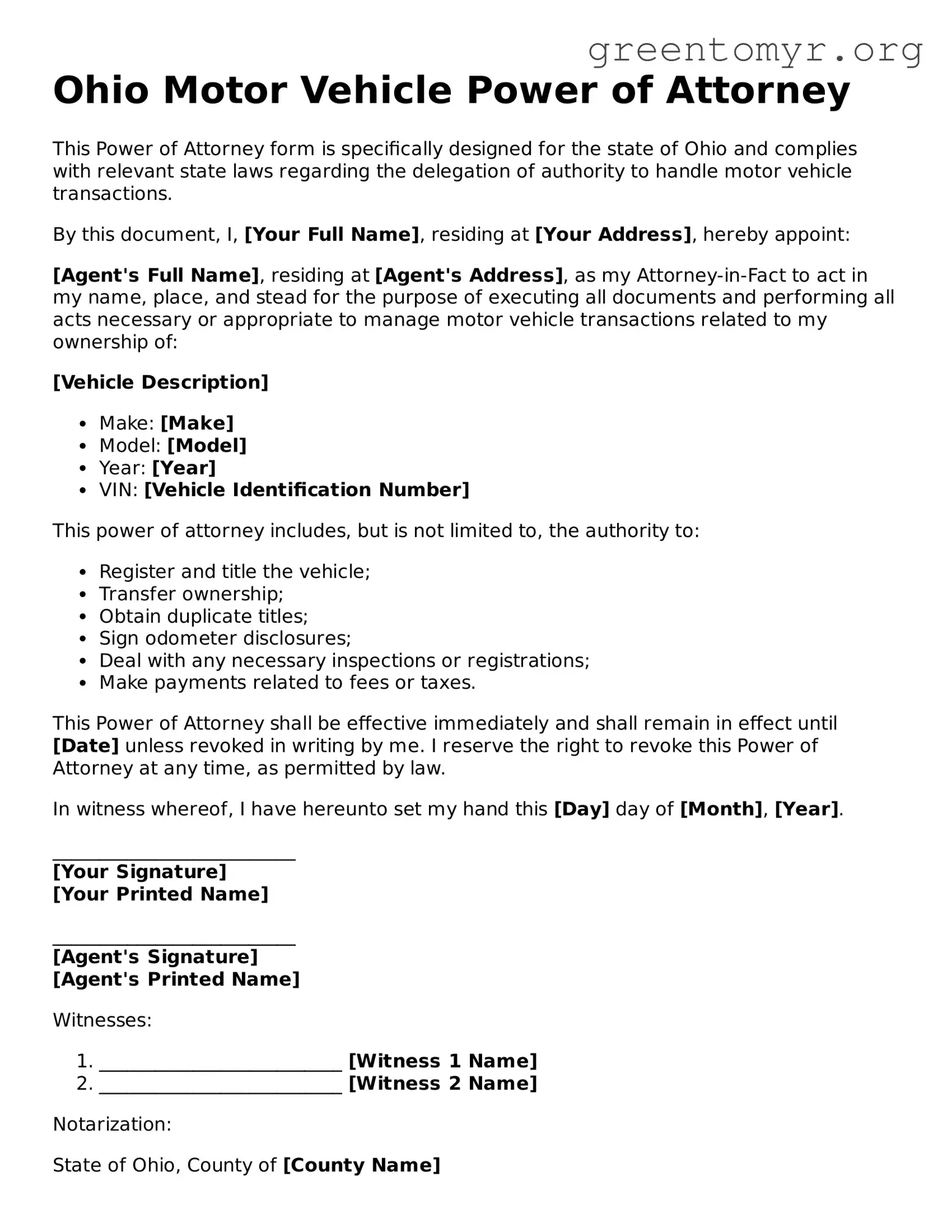Ohio Motor Vehicle Power of Attorney
This Power of Attorney form is specifically designed for the state of Ohio and complies with relevant state laws regarding the delegation of authority to handle motor vehicle transactions.
By this document, I, [Your Full Name], residing at [Your Address], hereby appoint:
[Agent's Full Name], residing at [Agent's Address], as my Attorney-in-Fact to act in my name, place, and stead for the purpose of executing all documents and performing all acts necessary or appropriate to manage motor vehicle transactions related to my ownership of:
[Vehicle Description]
- Make: [Make]
- Model: [Model]
- Year: [Year]
- VIN: [Vehicle Identification Number]
This power of attorney includes, but is not limited to, the authority to:
- Register and title the vehicle;
- Transfer ownership;
- Obtain duplicate titles;
- Sign odometer disclosures;
- Deal with any necessary inspections or registrations;
- Make payments related to fees or taxes.
This Power of Attorney shall be effective immediately and shall remain in effect until [Date] unless revoked in writing by me. I reserve the right to revoke this Power of Attorney at any time, as permitted by law.
In witness whereof, I have hereunto set my hand this [Day] day of [Month], [Year].
__________________________
[Your Signature]
[Your Printed Name]
__________________________
[Agent's Signature]
[Agent's Printed Name]
Witnesses:
- __________________________ [Witness 1 Name]
- __________________________ [Witness 2 Name]
Notarization:
State of Ohio, County of [County Name]
Subscribed and sworn before me this [Day] day of [Month], [Year].
__________________________
Notary Public
My commission expires: [Notary Expiration Date]
